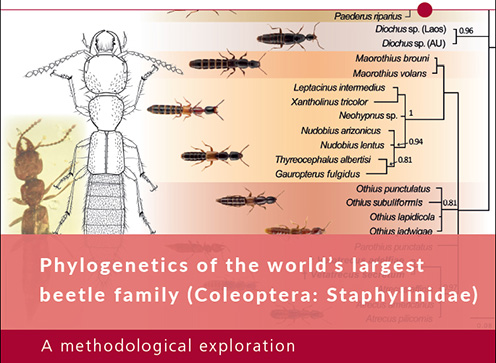PhD defense: Janina Lisa Kypke
Phylogenetics of the world’s largest beetle family (Coleoptera: Staphylinidae): A methodological exploration
Supervisor: Associate professor Alexey Solodovnikov
Assessment committee
Associate Professor, Docent Thomas Pape (chair)
Entomology Curator, Dr Jadranka Rota, Biological Museum, Lund University, Sweden
Research entomologist Dr habil Paweł Jałoszyński, Natural History Museum Uniwersytet Wrocławski, Poland
Abstract
Rove beetles (Coleoptera: Staphylinidae) form the largest family of all animals and they dominate ground-based cryptic habitats of terrestrial landscapes globally, having inhabited our planet for at least 200Ma. They are a prime example where sheer species-richness hinders the reconstruction of a robust phylogeny, render¬ing this group extremely challenging for systematic studies. Despite a considerable interest in them and the growing amount of taxonomic research, this major section of the planetary Tree of Life is still largely unknown.
Rove beetle phylogenetics is now brought into the new era of phylogenomics in an experimental study of 993 single-copy nuclear genes with a total alignment length of 494,743 amino-acid sites that were identified in 19 genomes, 11 transcriptomes and 40 nuclear protein-coding genes for a total of 33 and 57 species.
A morphology-based phylogenetic analysis of 65 characters for 38 representatives of the subfamilies Staphylininae and Paederinae, involving both crown and stem groups, places two newly discovered puzzling fossil species entrapped in 100 Ma Burmese amber within the extant tribe Othiini. It is the first time that a morphology-based phylogeny is in very high congruence with the earlier molecular analyses of 6 and 7 genes for this group.
Micro-CT is used to show that Baltic amber fossils covered in gaseous froth that most likely formed shortly after the insect’s entrapment and which made them inaccessible for light microscopy can be studied after the 3D image reconstruction process.

